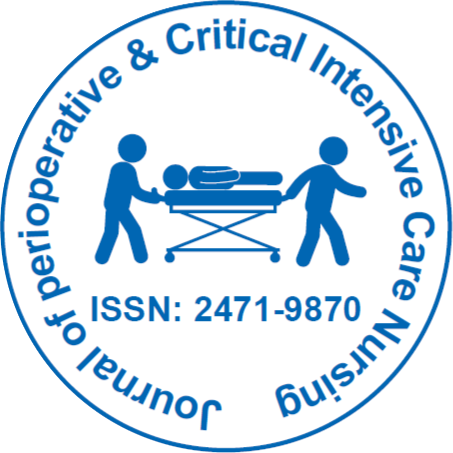
Journal of Perioperative & Critical Intensive Care Nursing
Open Access
ISSN: 2471-9870

ISSN: 2471-9870
Commentary - (2023)Volume 9, Issue 2
Peripheral catheters are essential medical devices used by nurses to provide intravenous (IV) access for patients. They are thin, flexible tubes inserted into a peripheral vein, typically in the arm or hand, to deliver medications, fluids, or blood products directly into the bloodstream. Peripheral catheters play a vital role in various healthcare settings, including hospitals, clinics, and home care. The importance of peripheral catheters, their application in nursing practice, and considerations for their safe and effective use are explored.
The primary purpose of a peripheral catheter is to facilitate the administration of fluids and medications, including antibiotics, analgesics, and intravenous fluids for hydration. This method of administration allows for rapid delivery of therapeutic agents directly into the circulatory system, ensuring quick onset and effectiveness. Peripheral catheters are particularly useful for short-term treatment or intermittent medication administration. Nurses are responsible for the insertion, maintenance, and monitoring of peripheral catheters. Insertion requires skill and precision to minimize patient discomfort and reduce the risk of complications. Nurses undergo training to develop the necessary expertise in the technique of catheter insertion. They must follow strict aseptic techniques to prevent infection and maintain patient safety. When inserting a peripheral catheter, nurses must select an appropriate site and vein, considering factors such as vein size, accessibility, and patient comfort. The choice of catheter gauge (diameter) depends on the prescribed therapy and the patient's condition. Smaller gauge catheters are suitable for medications with lower viscosity, while larger gauge catheters are required for thicker fluids or blood products. Nurses must also consider the patient's medical history, such as any previous complications related to catheter insertion or intravenous therapy. After insertion, nurses monitor the site for signs of complications or infections, such as redness, swelling, pain, or leakage. They also assess the flow rate, ensuring that medications or fluids are administered as prescribed. Regular flushing of the catheter with a saline solution helps maintain patency and prevent clot formation. Nurses follow strict protocols for catheter dressing changes and secure the catheter to prevent accidental dislodgement.
In addition to their administration role, nurses play a crucial role in patient education and empowerment regarding peripheral catheter care. They educate patients on signs of complications, proper hygiene, and self-monitoring. Patients are encouraged to report any abnormalities or concerns promptly. Nurses provide information on activities to avoid that may jeopardize the catheter's integrity and suggest strategies for maintaining cleanliness and minimizing the risk of infection. Nurses also advocate for the appropriate and timely removal of peripheral catheters. The removal process is carried out using aseptic technique to minimize the risk of infection. Catheters are typically removed when they are no longer needed, when complications arise, or when the prescribed treatment period has ended. Nurses ensure proper documentation of catheter removal, including the date, time, and condition of the insertion site. While peripheral catheters are generally considered safe, complications can occur. These may include infiltration (when fluid leaks into the surrounding tissue), phlebitis (inflammation of the vein), and bloodstream infections. Nurses are vigilant in monitoring for these complications and take prompt action if they occur. This may involve discontinuing the catheter, initiating appropriate treatment, and notifying the healthcare team for further assessment and intervention.
Peripheral catheters are indispensable tools in nursing practice, enabling the efficient and effective administration of medications and fluids. Nurses are responsible for the proper insertion, maintenance, and monitoring of these devices to ensure patient safety and optimal therapeutic outcomes. By adhering to aseptic techniques, conducting regular assessments, providing patient education, and promptly addressing complications, nurses play a vital role in the safe and effective use of peripheral catheters.
Citation: Scott D (2023) Peripheral Catheters: Essential Tools in Nursing Practice. J Perioper Crit Intensive Care Nurs. 9:224
Received: 22-May-2023, Manuscript No. JPCIC-23-24781; Editor assigned: 25-May-2023, Pre QC No. JPCIC-23-24781 (PQ); Reviewed: 09-Jun-2023, QC No. JPCIC-23-24781; Revised: 16-Jun-2023, Manuscript No. JPCIC-23-24781 (R); Accepted: 23-Jun-2023 , DOI: 10.35248/2471-9870.23.9.224
Copyright: © 2023 Scott D. This is an open-access article distributed under the terms of the Creative Commons Attribution License, which permits unrestricted use, distribution, and reproduction in any medium, provided the original author and source are credited.